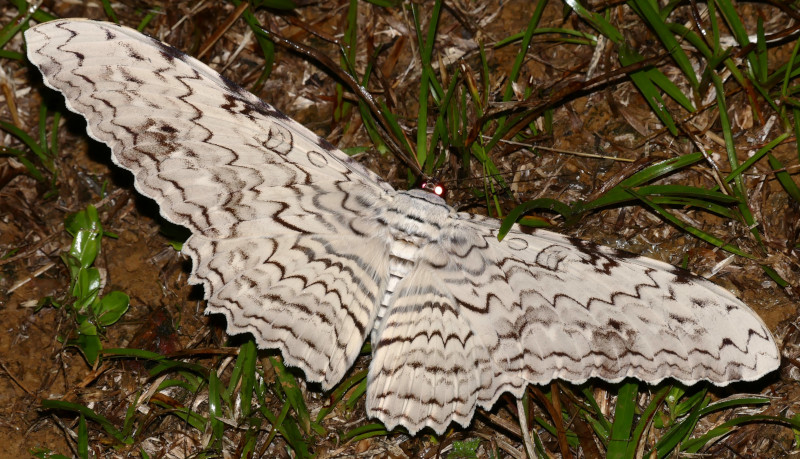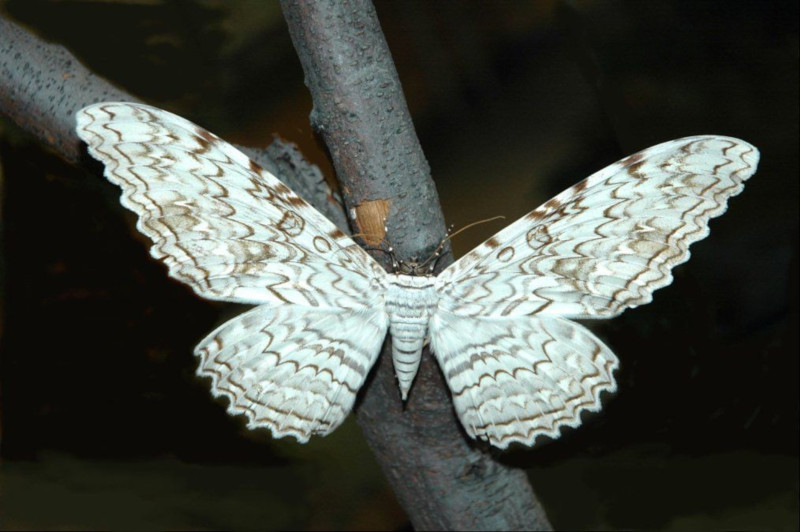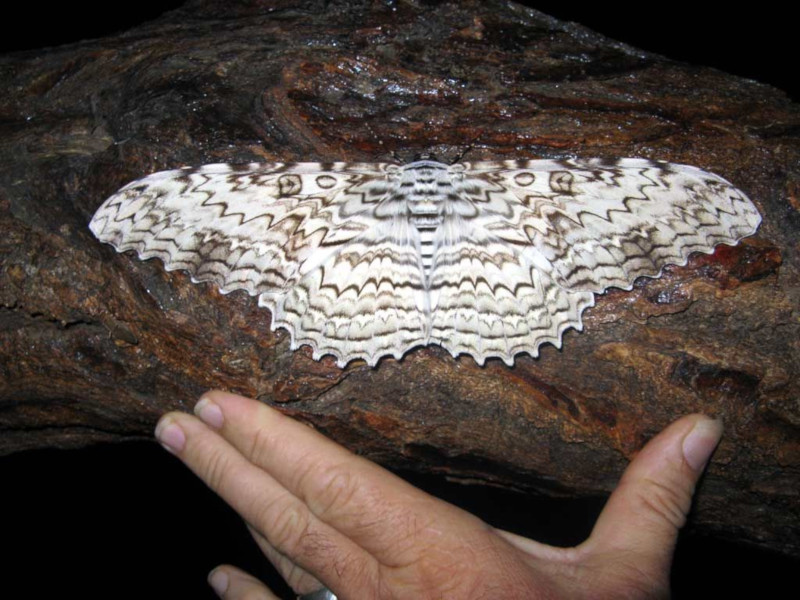
White Witch Moth Facts
- Perhaps most notably, the term White Witch Moth serves as the common name for one of the largest Lepidoptera in the world. The marvelous insect also goes by a somewhat less pronounceable scientific name. That’s the difficult term Thysania agrippina.
- Regardless of which name one uses to refer to it, though, the invertebrate remains a truly incredible variety of moth. The respected Dutch entomologist Pieter Cramer, furthermore, became the first person to officially describe this marvelous invertebrate.
- This fortuitous action occurred in the year 1776. Over the years, it has also acquired several alternate common names. These include such unique terms as the ghost moth, the great grey witch, the great owlet moth, and simply the white witch.
- For the moment, the IUCN does not have a listing for the White Witch Moth on its Red List of Threatened Species. This occurs partly because of the relatively wide distribution of the insect. Many experts nonetheless consider it to presently be at risk.
- That’s partly due to a significant reduction of its natural habitat. Sadly, that further holds true throughout the entirety of its range. It must also be considered to be at risk due to the effects of climate change, though. In that it mirrors many other creatures.
Related Articles




White Witch Moth Physical Description
The first thing the majority of individuals notice about the extraordinary White Witch Moth is its incredible beauty. That fact’s certainly understandable, of course. However, the lovely Lepidoptera also equally deserves attention for its extremely large size.
The fabulous arthropod also displays a very slight degree of the physiological trait known to science as sexual dimorphism. In its particular case, though, this characteristic displays itself in terms of a very small difference in overall physical appearance.
Its wings can reach a span of as much as 12 in (30 cm). Overall, the upper side of the wings of both genders displays a creamy white or light brown in color. Several black and brown lines further zigzag across the wings. The underneath, however, appears differently.
This part of the wings mainly shows a violet-black, along with white spots and markings. The males of the White Witch Moth, though, tend to have more patterns, as well as a white spot on the forewings. This minor difference is what visually distinguishes the genders.
- Kingdom: Animalia
- Phylum: Arthropoda
- Class: Insecta
- Order: Lepidoptera
- Family: Erebidae
- Genus: Thysania
- Species: T. agrippina

White Witch Moth Distribution, Habitat, and Ecology
Quite fortunately, the magnificent White Witch Moth inhabits relatively broad portion of the world, compared to most Lepidoptera. That partly holds true due to the fact that the arthropod occurs in a range that begins in southern Mexico, in North America.
Following that, however, its native territory expands dramatically. In fact, this extends through all of Central America. After that, it reaches all the way to the northern sections of the continent of South America. This remains among the greatest of ranges for a moth.
Quite unfortunately, entomologists do not know a great deal about some facets of the life of this insect. Some facts about its native habitat, however, have been noticed. For one, the marvelous creature appears to be quite adaptable to different habitats.
That’s because it has been seen in regions of rainforest, temperate forests, open grasslands, rural areas, and even within the confines of a city. One key factor about the ecology of the gorgeous and somewhat mysterious White Witch Moth does present itself, however.
That’s the fact that the caterpillar form predominantly feeds on the India-rubber tree. This occurs because that’s where the female lays her eggs. This has the effect of limiting the areas in which eggs are laid. The leaves of these plants the caterpillars consume voraciously.
Species Sharing Its Range



Check out our other articles on Earth’s Many Astounding Beetles, Snowy Owl, Hot Water Beach, San Diego Thornmint, Indian Giant Squirrel, Lord Howe Island Stick Insect









Leave a Reply